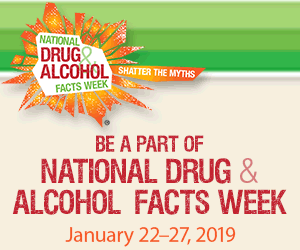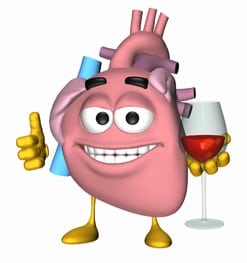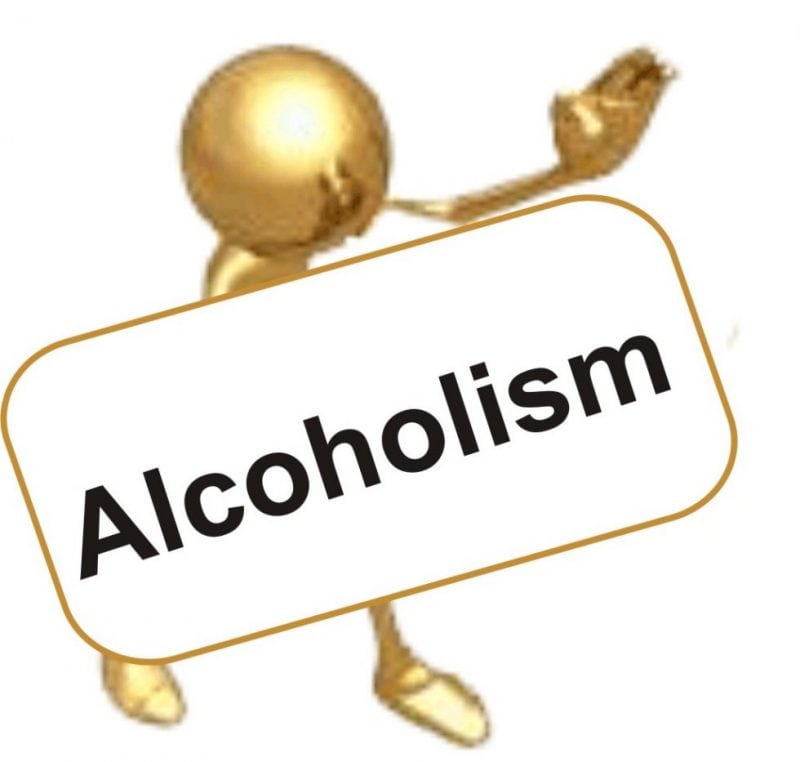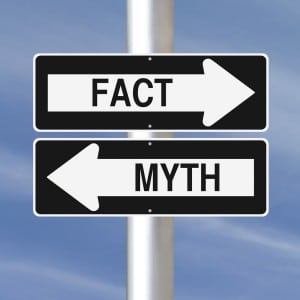Introduction

Does the thought of alcohol toxicity creep into your mind during a massive party or celebration? Well, forewarned is forearmed. It’s not my intention to spoil the “buzz” of enjoying good times with your friends, but allow me to provide some liquor for thought. Most everyone knows the effects of getting drunk. What most seem to forget is that alcohol has a continuum of effects that isn’t restricted to becoming “buzzed,” intoxicated or just drunk. Alcohol poisoning also includes effects such as coma and death.
Some of you may be reflecting on the times when you felt most intoxicated. Perhaps it was a college event, a New Year’s Eve party or a sports event (or all of the above). Your first take home message of the day is alcohol poisoning isn’t about how you feel. It’s simply about the concentration of alcohol in your blood and the effects that amount of alcohol will have on your system. This is commonly described as BAC – blood alcohol content.
As BAC increases, so do the effects of alcohol. Let’s quantify the amount of alcohol that is associated with danger, how symptoms progress with alcohol poisoning and the different BAC levels that are associated with danger.

Amount
We’re talking about acute alcohol toxicity and poisoning. This is typically brought on via a large intake of alcohol (e.g., binge drinking). Bingeing is generally regarded as at least four to five drinks (for women and men, respectively) within two hours. This level of drinking will raise your BAC into the “legally drunk” level and increase the risk of adverse consequences. Such amounts can overwhelm the body’s metabolism and elimination of alcohol from the blood. When this occurs, further alcohol intake will rapidly increase BAC and impair bodily functions, most notably those of the brain.
Note the following chart, which gives a rough estimate of the general effects of different amounts of alcohol based on your weight. It is very important to realize that weight, age, sex and other considerations play into the individual effects of alcohol on you.

Symptoms of Alcohol Poisoning
Alcohol poisoning occurs when there is so much alcohol in the bloodstream that it is able to affect and shut down areas of the brain controlling basic life-support functions (i.e., breathing, heart rate, and regulation of your core temperature). Symptoms of alcohol poisoning include confusion, difficulty breathing and remaining conscious, vomiting, seizures, slowed heart rate, clammy skin, dulled responses, such as no gag reflex (which prevents choking) and an extremely low body temperature.
BAC can continue to rise even when a person is unconscious. Alcohol in the stomach and intestine continues to enter the bloodstream and circulate throughout the body. This makes “sleeping it off” a very dangerous proposition, and you should not assume one will be better by doing so. Alcohol is a depressant to the brain. Among its activities is dulling the gag reflex. Coupling that with alcohol’s irritant effects on the stomach, a person who drinks to the point of passing out is in danger of choking on vomit, which in turn could lead to death by asphyxiation (inadequate oxygenation). Even survival can leave a victim of an alcohol overdose with brain damage.
Effects
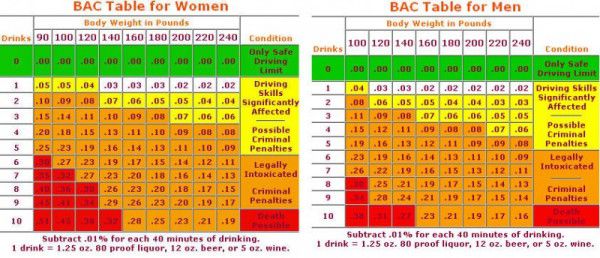
The above charts approximate the BACs that occur with varying numbers of drinks. Let’s continue to think about binge drinking, focusing on the following male/female charts after one hour of drinking. Although there is individual variation in the clinical effects of the number of drinking one may have, the clinical effects of alcohol are rather consistent at various BACs. These levels eventually reach a point of toxicity known as alcohol poisoning. This designation is particularly meaningful in that it reflects the level at which the level of alcohol in the blood begins to shut down areas of the brain controlling basic life-support functions (i.e., breathing, heart rate, and regulation of core temperature).
Clinical Effects at Various BACs
This next section is at a level of specificity that you won’t remember, but I want to go through the detail to demonstrate the increasing dangers seen with increasing levels of intoxication. Don’t be lulled into comfort by the lower levels. Even small levels of alcohol in the system affect judgment and coordination. Increased amounts affect the body and mind more dramatically, leading to the ability to kill.
The following effects of different levels of BAC are approximations. Individual reactions vary, sometimes widely.
BAC .02 percent to .04 percent
This level tends to produce mild relaxation, loosened inhibitions and some lightheadedness. Prevailing moods may intensify.
BAC .05 percent to .07 percent
This level tends to intensification and exaggeration of emotions and behavior. Euphoria may begin, and a feeling of relation and warmth may overcome you.
BAC .08 percent to .09 percent
At this level you’re losing an ability to accurate assess your level of functioning. You may have slurred speech, impaired motor skills and a degree of imbalance. Your sense of seeing and hearing clearly are diminished, and your reduced judgment often leads to continued drinking when this would actually be a good time to stop. This level corresponds to a diminished ability to evaluate sexual situations.
BAC .10 percent to .12 percent
At this level, you are clearly suffering. You have diminished motor skills, coordination, balance, judgment and memory. Emotions become even more exaggerated at both extremes. Some people become loud, aggressive or belligerent, and others may seem depressed. This BAC level also corresponds to when men may have trouble getting an erection.
BAC .14 percent to .17 percent
At this level euphoria may give way to unpleasant feelings. You have difficulty talking, walking or even standing up. Your judgment and perception are severely impaired. You may become more aggressive and are at increased risk of accidentally injuring yourself or others. A blackout may occur at this level.
BAC .20 percent
At this point, neurologic effects are present. You may feel confused, dazed or otherwise disoriented and may need help to stand up or walk. If you are injured, you probably won’t realize it because you won’t feel pain, and if you do realize it, you may be inclined not to do anything about it. At this point you may experience nausea and start vomiting. Your gag reflex is impaired, so you could choke if you throw up. Since blackouts are likely at this level, you may not remember any of this.
BAC .25 percent
At this point, all mental, physical and sensory functions are severely impaired. You’re emotionally numb. There’s an increased risk of death due to asphyxiation (inadequate oxygen) caused by choking on vomit and of seriously injuring yourself by falling or other accidents.
BAC .30 percent
You’re probably in a stupor. You have little comprehension of where you are or what’s really going on around you. You may suddenly pass out and be difficult to awaken.
BAC .35 percent
This blood alcohol concentration is similar to the physical effects of surgical anesthesia. You may stop breathing.
BAC .40 percent to .50 percent
You are probably in a coma. The nerve centers controlling your heartbeat and respiration are slowing down, and it’s a miracle if you survive.
Let’s bring things full circle. Someone weighing 100 pounds who has consumed 9-10 drinks in less than an hour is at risk of death. Here’s how. The term “lethal dose” (LD) is used to describe the blood concentration that produces death from drugs (in this case, alcohol) in half the population. Most authorities agree that BACs in the 0.40 percent to 0.50 percent range meet the requirement. That percent is an average, not an absolute standard. Fatal overdoses from alcohol at BACs lower than 0.40 percent have been documented, as have cases of survivors at BACs higher than 0.50 percent. If you refer to the above chart correlating number of drinks, weight and BAC levels, you can now figure out how dangerous different numbers of drinks can be.

Here’s a final take home message for you. Alcohol poisoning is a life-threatening condition and requires immediate medical attention. You don’t have time for cold showers, hot coffee or walking. Not only will these not reverse the effects of alcohol overdose, but they could actually make things worse.
Follow us!
Ask your SMA expert consultant any questions you may have on this topic. Also, take the #72HoursChallenge, and join the community. Additionally, as a thank you, we’re offering you a complimentary 30-day membership at www.72hourslife.com. Just use the code #NoChaser, and yes, it’s ok if you share!
Order your copy of Dr. Sterling’s books There are 72 Hours in a Day: Using Efficiency to Better Enjoy Every Part of Your Life and The 72 Hours in a Day Workbook: The Journey to The 72 Hours Life in 72 Days at Amazon or at www.jeffreysterlingbooks.com. Another free benefit to our readers is introductory pricing with multiple orders and bundles!
Thanks for liking and following Straight, No Chaser! This public service provides a sample of http://www.SterlingMedicalAdvice.com (SMA) and 844-SMA-TALK. Likewise, please share our page with your friends on WordPress! Also like us on Facebook @ SterlingMedicalAdvice.com! Follow us on Twitter at @asksterlingmd.
Copyright © 2019 · Sterling Initiatives, LLC · Powered by WordPress
